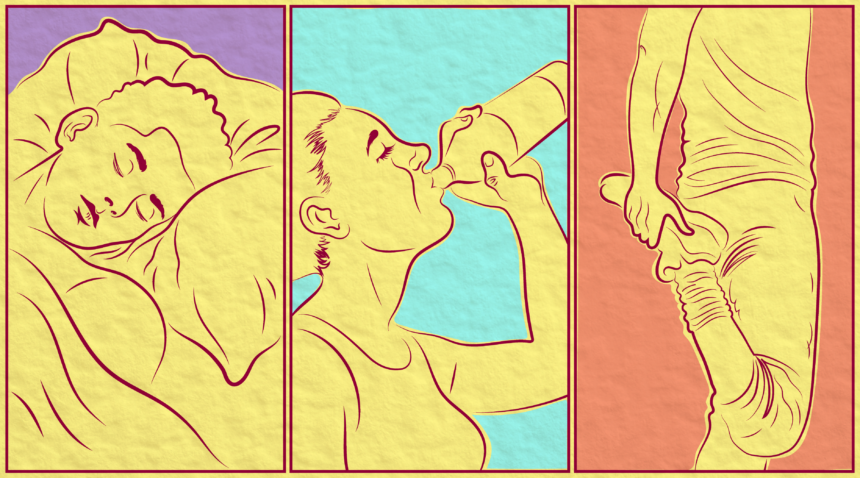If you have decided to exercise more often, congratulations! You’re making a great investment in yourself because exercise has so many benefits to health. While it’s tempting to sign up for the hardest class at the gym or hit the treadmill for a long session, it’s also important to consider safety and injury when you begin new exercise programs.
About 8.6 million Americans are injured during physical activity every year. UNC physical therapist Madison Franek, DPT, offers some tips on keeping up your new exercise routine while avoiding injury.
Before You Hit the Gym
Getting a good night’s sleep, ensuring proper nutrition and staying hydrated can go a long way to reducing the risk of injury while exercising.
“If you’re not sleeping well or you’re stressed because of work or family, that can affect your workout and make you more prone to injury,” Dr. Franek says.
Adequate sleep, nutrition and hydration help make sure your body has what it needs to recover, conserve energy, and repair and build up the muscles you used during exercise. For example, when you sleep, your body releases a growth hormone that helps you build lean muscle and repairs muscle after a hard workout.
“Ensure you get seven to 10 hours of sleep, try to minimize sleep disruptions and try to ensure sleep consistency from night to night,” Dr. Franek says.
Eating protein can help repair muscle and reduce muscle breakdown after exercise. Be sure to include a sufficient amount of protein in your diet.
Staying hydrated is critical for any type of exercise, because being dehydrated can negatively affect both physical and mental performance. Drink water before you get thirsty.
“Before you work out, remember these factors can affect your workout, so adjust your workout depending upon those things,” Dr. Franek says.
For example, if you had a great night’s sleep, “then consider exercising at the intensity that you were aiming for,” Dr. Franek says. “On the other hand, if sleep the night before was poor and/or anxiety or stress is elevated compared to normal, then it may be best to reduce the intensity of the workout.”
Modify in the short term to optimize the long term.
During Your Workout
If it’s been a while since you hit the gym, it’s important to ease back in. Build up slowly and gradually as opposed to having a sudden spike in activity.
“At this time of year, we see a lot of people go from 0 to 100, and they end up in physical therapy because they’ve done too much after not having done enough for a long period of time,” Dr. Franek says.
For example, if you want to take up running, start walking first, then alternate between running and walking in the same session. Gradually start running for longer periods, and eventually you can build up to running the entire time. Or set a goal of working out for 20 minutes three times a week and gradually build up to longer workouts five to six days a week.
Don’t start any new exercise without first learning the correct form. Ask a trainer at the gym or a fitness class instructor to check your form.
After Your Workout
Cool down after a workout for five to 10 minutes. Try slowing down to a walk or a jog or march in place to bring your heart rate down. Use a foam roller to roll over large body parts. Hit each spot for about five to 10 seconds two to three times, Dr. Franek says.
If you are familiar with yoga poses such as child’s pose, cat and cow, and camel, these can be part of your cool-down routine. Hold each pose for three to five seconds two to three times each.
Diaphragmatic breathing, also called belly breathing or abdominal breathing, can be helpful in cooling down your body after a workout. Breathe in through your nose for about two seconds, expanding your stomach. Then, purse your lips and slowly exhale for about two seconds. Repeat this several times.
Stretching tired and sore muscles after a workout is important because it enhances flexibility and reduces muscle tension. Stretching can minimize and reduce your risk of injuries.
When to Call the Doctor
Soreness after exercise is to be expected, particularly if exercising for the first time or the first time in some time.
“However, if you have a sustained level of pain after 48 hours or you’re feeling sharp, shooting sensations, it’s a good idea to seek medical attention,” Dr. Franek says. “But if you’ve got some increased soreness 24 hours after your workout and it goes away within 24 hours, then that’s probably just a good workout that you got in.”
If you have an exercise injury, talk to your doctor. If you need a doctor, find one near you.

